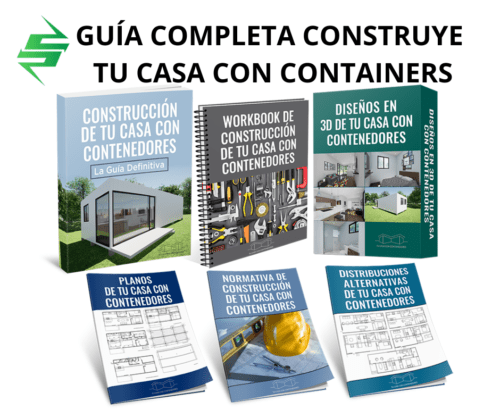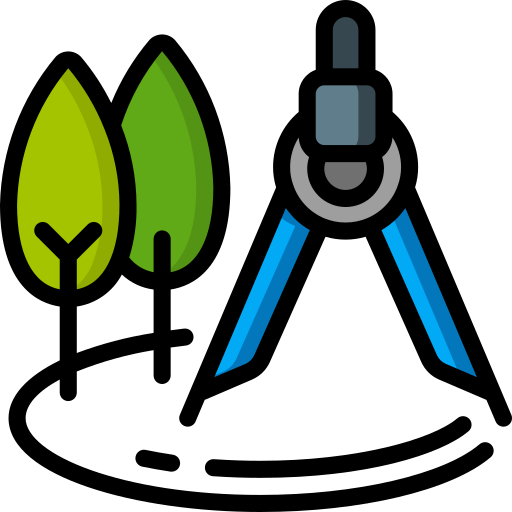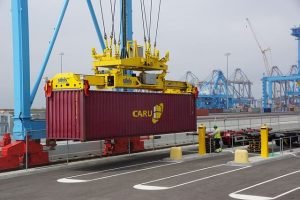You may have decided to build your home, office, or even a small warehouse using shipping containers, but you’re not sure about the cost of a shipping container to make this step you want to take a reality. To help you decide what containers you need and also where and how to purchase them, we’ll explore the entire process.
Types of Containers
There are various options here, the most popular of which are the standard 20 or 40-foot container or the high cube 20 or 40-foot container. Please take a look at the dimensions of each in the table below.
| Table | Length | Width | Height |
| Standart 20-foot | 19’10 1/2″ (6.06 m) | 8′ (2.44 m) | 8’6″ (2.59 m) |
| Standart 40-foot | 40′ (12.19 m) | 8′ (2.44 m) | 8’6″ (2.59 m) |
| High Cube 20-foot | 19’10 1/2″ (6.06 m) | 8′ (2.44 m) | 9’6″ (2.90 m) |
| High Cube 40-foot | 40′ (12.19 m) | 8′ (2.44 m) | 9’6″ (2.90 m) |
| Table | Length | Width | Height |
| Standart 20-foot | 19′ 4 (5.89 m) | 7′ 8 (2.34 m) | 7′ 10 (2.39 m) |
| Standart 40-foot | 39′ 5 (12.01 m) | 7′ 8 (2.34 m) | 7′ 10 (2.39 m) |
| High Cube 20-foot | 19′ 4 (5.89 m) | 7′ 8 (2.34 m) | 8′ 10 (2.69 m) |
| High Cube 40-foot | 39′ 5 (12.01 m) | 7′ 8 (2.34 m) | 8′ 10 (2.69 m) |
Please note that each manufacturer has slightly different sizes, typically within + or – 5 mm. Contact the supplier for exact dimensions. You will have to make decisions about both the availability of containers in your local area and the plans you have already prepared.
If you have the budget and can purchase containers now, high cube containers are generally a better choice than standard ones. This is because you get an extra foot of height inside the container, which makes a significant difference.
What is the cost of a Shipping Container?
Clearly, this will vary depending on the containers you have decided to purchase and also the distributor. However, below are some estimates to give you a rough idea of what the price of a shipping container might be:
Used standard 20-foot container: $2,100 New standard 20-foot container: $3,000 Used standard 40-foot container: $2,850 New standard 40-foot container: $5,600 Used high cube 20-foot container: $2,200 New high cube 20-foot container: $3,200 Used high cube 40-foot container: $2,950 New high cube 40-foot container: $5,800
Buying New, One-Trip, or Used Containers?
Between new containers and one-trip containers, they are essentially the same. One-trip containers are used to ship only one load, and once they reach their destination, they are sold. Clearly, the decision to buy new or used containers will likely reduce your budget costs.
There are some points to consider as you explore your options:
- New or one-trip containers will be in better condition than used containers.
- They are easier to work with.
- They also have a longer lifespan than used containers.
Additionally, the risk of unknown chemical contamination is significantly reduced. Most used containers are treated with hazardous chemicals, such as pesticides and lead-based paint.
New and one-trip containers are more expensive than used containers and may therefore cost more than your budget allows.

Used containers offer the advantage of being less expensive than new containers and are quick to locate and purchase. However, be prepared to find some dents and potentially some rust.
Inspecting Used Containers
If you decide to buy new or one-trip containers, you generally won’t need to inspect the containers closely. However, if you buy a used container, there are several key things to look for during the inspection:
- Ensure it is watertight and has no leaks. If you can see daylight coming through the container’s roof, do not buy it.
- While you should expect some normal wear and tear on the wooden floor, make sure it is intact and has no holes.
- Check that the doors open freely, and the locking bars work.
- It’s normal to find some dents and very light rust. However, if the container has a significant amount of corrosion to the point where the metal is weakened or, worse, you can see through it, do not buy it.
- Use your nose and inspect the container for strange or musty odors. The smell of moldy dampness would indicate that leaks or toxic chemicals have been used in the container.
- Climb onto the container’s roof and check for signs of leaks or corrosion.
- Verify that the container’s identification code is intact. The identification code is divided into eleven digits as shown below.

Owner Code: Three letters identifying the owner. In this case, ‘TGH’ belongs to the American company Textainer.
Product Group Code: Composed of a capital letter U, J, or Z.
- U = shipping container
- J = equipment that can be attached to a container, such as a power unit
- Z = trailer used for hauling a container
Serial Number: A six-digit number assigned by the owner
Check Digit: A single-digit number used for cross-checking that the identification sequence is accurate.
Where to Buy Containers?
The simplest way to buy a container is to find a reputable local distributor. Alternatively, you can search on Google. Look for ‘container distributor’ and your location. For example, search for something like “Container Distributor in Mendoza” or “Buy Containers in Buenos Aires.”
When buying your containers, try to purchase them all from the same manufacturer. Manufacturers have slight variations that could make working with containers from different brands more challenging.
With these questions answered, you now have a good idea of how to buy a container, and you can begin your search.
Also, read “Types of Shipping Containers.”
 MAS INFORMACIÓN CLIC AQUÍ Construye Tu Casa con Contenedores Paso a Paso
MAS INFORMACIÓN CLIC AQUÍ Construye Tu Casa con Contenedores Paso a Paso  «Tu casa con contenedores» es la única guía paso a paso que existe para construir tu propia casa con containers desde cero. No importa si no tienes conocimientos sobre construcción, si pensar en ello te da dolor de cabeza, si eres constructor o trabajas en una oficina. La guía está escrita para que cualquiera pueda entenderlo. MAS INFORMACIÓN CLIC AQUÍHágalo Usted Mismo Construye Tu Casa con Contenedores Paso a Paso
«Tu casa con contenedores» es la única guía paso a paso que existe para construir tu propia casa con containers desde cero. No importa si no tienes conocimientos sobre construcción, si pensar en ello te da dolor de cabeza, si eres constructor o trabajas en una oficina. La guía está escrita para que cualquiera pueda entenderlo. MAS INFORMACIÓN CLIC AQUÍHágalo Usted Mismo Construye Tu Casa con Contenedores Paso a Paso


